- You are here:
- Home »
- Indoor Plants
- » Elephant’s Ear Kalanchoe Care Guide
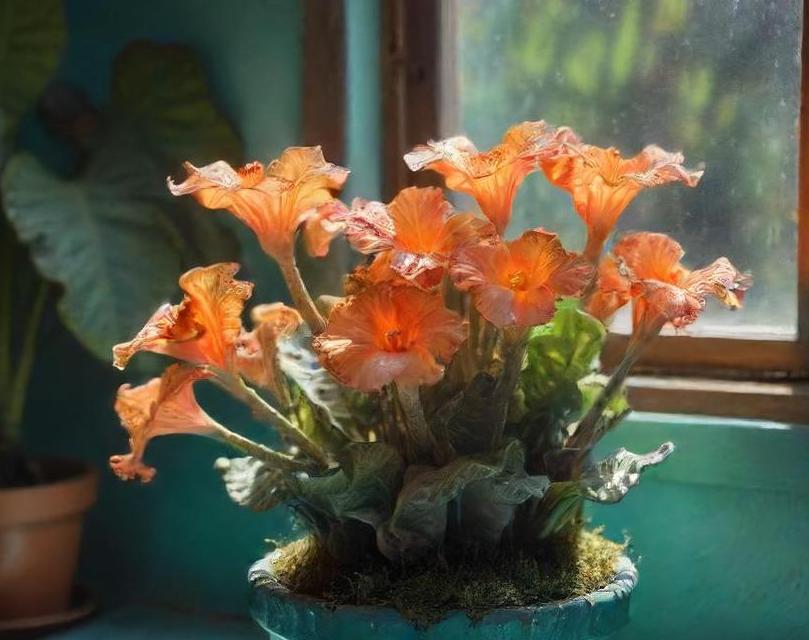
Elephant’s Ear Kalanchoe Care Guide
Indoor plants have become an essential part of interior design, not only for their aesthetic appeal but also for their ability to improve air quality and promote well-being. Among the plethora of options available, the Elephant’s Ear Kalanchoe stands out as a unique and captivating choice. This article delves into the intricacies of this remarkable plant, exploring its botanical characteristics, historical and cultural significance, common names, and varieties.
Contents
- 1 What Is Elephant’s Ear Kalanchoe?
- 2 Botanical Characteristics
- 3 Historical And Cultural Significance
- 4 Common Names And Varieties
- 5 Light Requirements
- 6 Soil Requirements
- 7 Temperature Requirements
- 8 Humidity Requirements
- 9 Watering Needs For Elephant’s Ear Kalanchoe
- 10 Fertilization
- 11 How To Plant Elephant’s Ear Kalanchoe
- 12 Potting
- 13 Pruning Techniques For Elephant’s Ear Kalanchoe
- 14 Propagation Methods For Elephant’s Ear Kalanchoe
- 15 Troubleshooting Problems With Planting Elephant’s Ear Kalanchoe Indoors
- 16 Conclusion
- 17 FAQS
What Is Elephant’s Ear Kalanchoe?
Elephant’s Ear Kalanchoe, scientifically known as Kalanchoe beharensis, is a species of succulent plant belonging to the Crassulaceae family. Native to Madagascar, this striking plant is prized for its large, fleshy leaves and distinctive appearance. It is widely cultivated as an ornamental plant and is particularly popular among indoor gardening enthusiasts due to its ability to thrive in indoor conditions.
The name "Elephant’s Ear" is derived from the shape and texture of its leaves, which resemble the ears of an elephant. The plant is also commonly referred to as "Velvet Leaf Kalanchoe" due to the velvety texture of its leaves.
Botanical Characteristics
Morphology
The Elephant’s Ear Kalanchoe is characterized by its robust, upright growth habit and large, paddle-shaped leaves. The leaves are typically a vibrant green color, although some cultivars may exhibit variations such as silver or bronze tones. The leaves have a thick, succulent texture, which helps the plant retain water in arid conditions.
The leaves of the Elephant’s Ear Kalanchoe are densely covered in fine, velvety hairs, giving them a soft and tactile quality. This feature not only adds to the plant’s visual appeal but also serves a practical purpose by helping to reduce water loss through transpiration.
Growth Habit
In its natural habitat, the Elephant’s Ear Kalanchoe can grow to impressive heights, reaching up to six feet tall. However, when cultivated indoors, it typically remains more compact, making it well-suited for container gardening.
The plant produces clusters of small, tubular flowers on tall, upright stems, typically in shades of yellow or orange. While the flowers are relatively insignificant compared to the foliage, they add a delightful splash of color to the plant’s overall appearance.
Cultural Requirements
Like most succulent plants, the Elephant’s Ear Kalanchoe is relatively low-maintenance and thrives in conditions that mimic its native habitat. It prefers bright, indirect light and well-draining soil that allows excess water to escape easily. Overwatering is a common cause of issues with this plant, so it’s essential to allow the soil to dry out between waterings.
The plant is tolerant of a wide range of temperatures but prefers warmer conditions and may suffer damage if exposed to frost. Additionally, it benefits from regular fertilization during the growing season to promote healthy growth.
Historical And Cultural Significance

Native Habitat
The Elephant’s Ear Kalanchoe is indigenous to Madagascar, where it can be found growing in rocky, arid environments. In its native habitat, it plays a vital role in the local ecosystem, providing food and habitat for various wildlife species.
Traditional Uses
In addition to its ornamental value, the Elephant’s Ear Kalanchoe has a long history of medicinal use in traditional African medicine. Various parts of the plant, including the leaves and stems, are believed to possess therapeutic properties and have been used to treat a range of ailments, including wounds, inflammation, and digestive issues.
Symbolism
In African cultures, succulent plants like the Elephant’s Ear Kalanchoe are often associated with resilience and endurance due to their ability to thrive in harsh environments. As such, they are sometimes used as symbols of strength and perseverance in traditional rituals and ceremonies.
Common Names And Varieties
Common Names
The Elephant’s Ear Kalanchoe is known by several common names, reflecting its distinctive appearance and characteristics. In addition to "Elephant’s Ear" and "Velvet Leaf Kalanchoe," it may also be referred to as "Felt Bush" or "Velvet Elephant Ear."
Varieties
While the species Kalanchoe beharensis is the most commonly cultivated variety of Elephant’s Ear Kalanchoe, there are several cultivars and hybrids available to collectors and enthusiasts. These cultivars may exhibit variations in leaf color, size, and texture, offering a diverse range of options for indoor gardeners.
Some popular cultivars of Elephant’s Ear Kalanchoe include:
- Kalanchoe beharensis ‘Fang’: This cultivar is distinguished by its deeply lobed leaves, which have serrated edges reminiscent of fangs.
- Kalanchoe beharensis ‘Tomentosa’: Also known as the “Fuzzy Elephant”s Ear”, this cultivar features leaves covered in dense, woolly hairs, giving them a soft, fuzzy appearance.
- Kalanchoe beharensis ‘Rose Leaf’: Characterized by its rosy-pink foliage, this cultivar adds a unique splash of color to indoor plant collections.
The Elephant's Ear Kalanchoe is a captivating addition to any indoor garden, with its striking foliage and easy-care nature making it a favorite among plant enthusiasts. Native to Madagascar, this resilient succulent has a long history of cultural and medicinal significance, reflecting its importance in both traditional and modern contexts. Whether grown for its ornamental beauty or cherished for its symbolic value, the Elephant's Ear Kalanchoe continues to captivate and inspire plant lovers around the world, serving as a testament to the enduring allure of nature's wonders.
Light Requirements
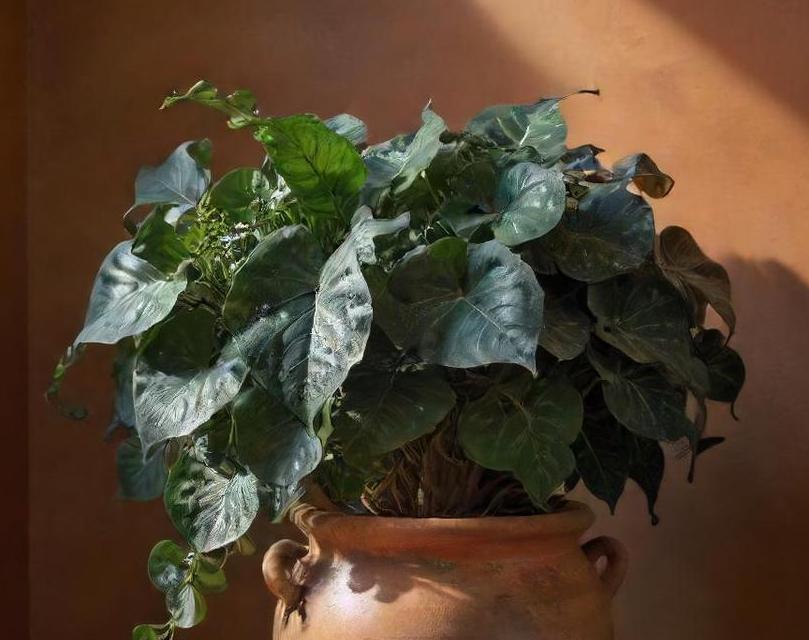
The Elephant’s Ear Kalanchoe, scientifically known as Kalanchoe beharensis, is a succulent plant native to Madagascar. Its name is derived from the shape and texture of its leaves, which resemble the ears of an elephant. This striking plant features thick, fleshy leaves with scalloped edges and a velvety texture, making it an attractive addition to any indoor setting.
In its natural habitat, Elephant’s Ear Kalanchoe thrives in arid conditions with plenty of sunlight. However, it has also adapted well to indoor environments, making it an ideal choice for houseplant enthusiasts. With proper care, this plant can grow up to several feet tall, adding a dramatic flair to any room.
Proper lighting is essential for the health and growth of Elephant’s Ear Kalanchoe. As a succulent plant, it thrives in bright, indirect light. Placing it near a south or west-facing window where it can receive ample sunlight is ideal. However, it’s important to avoid direct sunlight, especially during the intense midday hours, as it can scorch the leaves.
If natural light is limited in your space, you can supplement with artificial lighting using grow lights. Choose full-spectrum LED grow lights that mimic the spectrum of natural sunlight to ensure optimal growth and development. Position the lights approximately 12 to 18 inches above the plant and keep them on for 12 to 14 hours a day to simulate daylight conditions.
Regularly rotate the plant to ensure even exposure to light on all sides and prevent it from leaning towards the light source. Monitoring the plant for signs of sunburn, such as yellowing or browning of the leaves, can help you adjust its placement to provide the perfect balance of light.
Soil Requirements
Choosing the right soil is crucial for the Elephant’s Ear Kalanchoe to thrive indoors. Like most succulents, it prefers a well-draining soil mix that allows excess moisture to escape quickly, preventing root rot. A combination of potting soil, perlite, and coarse sand or gravel works well for providing the ideal growing medium.
When repotting or planting Elephant’s Ear Kalanchoe, ensure the container has adequate drainage holes to prevent water from pooling at the bottom. This helps maintain proper soil moisture levels and prevents the roots from becoming waterlogged.
Additionally, avoid using heavy, organic-rich soils that retain moisture for extended periods, as they can lead to root rot and other fungal diseases. Instead, opt for a gritty, fast-draining soil mix that promotes healthy root development and prevents waterlogged conditions.
Temperature Requirements
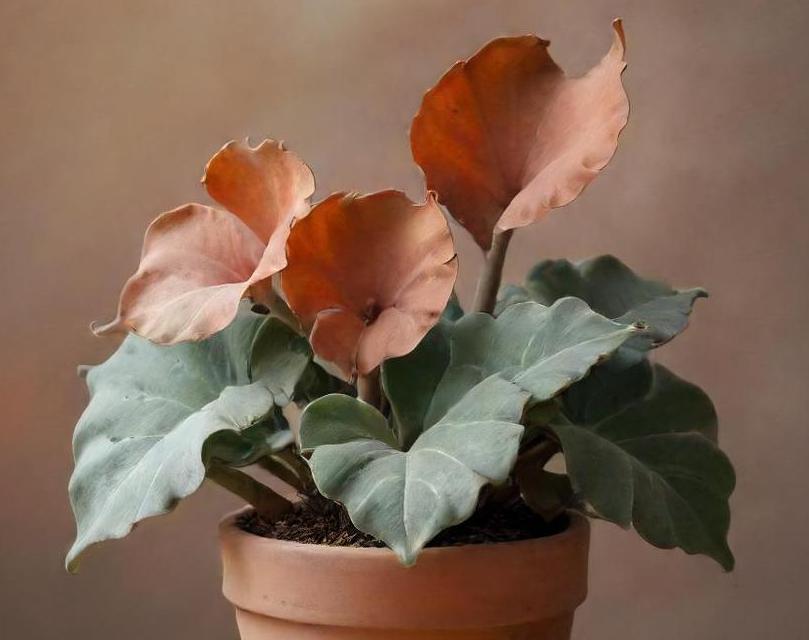
Maintaining the right temperature is essential for the Elephant’s Ear Kalanchoe to thrive indoors. This plant prefers warm temperatures similar to its native habitat in Madagascar. Ideally, keep the room temperature between 60°F to 75°F (15°C to 24°C) during the day and slightly cooler at night.
Avoid exposing the plant to drastic temperature fluctuations, as it can stress the plant and affect its growth. Drafts from windows, doors, or air conditioning vents can also harm the Elephant’s Ear Kalanchoe, so be mindful of its placement within your home.
During the winter months, when indoor heating can dry out the air, consider increasing humidity levels around the plant to prevent leaf wilting and dehydration. Grouping plants together or using a humidifier can help create a more favorable microclimate for your Elephant’s Ear Kalanchoe.
Humidity Requirements
While Elephant’s Ear Kalanchoe is tolerant of low humidity levels, it can benefit from occasional misting or a humidifying tray to increase moisture in the air, especially during dry winter months. Misting the leaves with room-temperature water can help hydrate the plant and prevent the tips from drying out.
Alternatively, you can place the plant on a tray filled with pebbles and water, ensuring the bottom of the pot does not sit directly in the water. As the water evaporates, it creates a humid microclimate around the plant, mimicking its natural habitat and promoting healthy growth.
It’s essential to strike a balance with humidity levels, as excessive moisture can lead to fungal diseases and root rot in succulent plants. Monitor the plant closely for signs of overwatering or humidity-related issues, such as mushy leaves or soggy soil, and adjust your care routine accordingly.
The Elephant’s Ear Kalanchoe is a stunning succulent plant that adds a touch of exotic beauty to any indoor space. With its distinctive foliage and relatively low maintenance requirements, it’s an excellent choice for both novice and experienced plant enthusiasts alike. By providing the right conditions, including proper lighting, well-draining soil, consistent temperatures, and occasional humidity adjustments, you can ensure your Elephant’s Ear Kalanchoe thrives and flourishes year-round. Whether displayed as a focal point in a room or incorporated into a larger indoor garden, this versatile plant is sure to delight and inspire admiration for its unique charm and resilience.
Watering Needs For Elephant’s Ear Kalanchoe
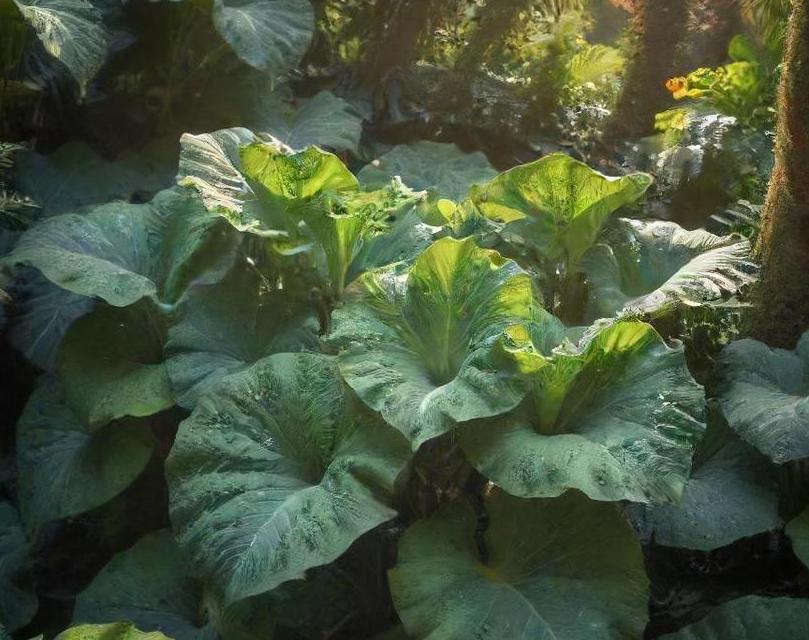
Elephant’s Ear Kalanchoe, scientifically known as Kalanchoe beharensis, is a striking succulent plant native to Madagascar. It belongs to the Crassulaceae family and is admired for its distinctive foliage resembling the ears of an elephant, hence its common name. This captivating plant features large, velvety, triangular leaves with scalloped edges and a silvery-green hue, making it an eye-catching addition to any indoor garden or botanical collection.
With its unique appearance and relatively low maintenance requirements, Elephant’s Ear Kalanchoe has become a popular choice among plant enthusiasts and interior decorators alike. Understanding its specific care needs is crucial for ensuring its health and vitality in indoor environments.
Proper watering is essential for the well-being of Elephant’s Ear Kalanchoe, as overwatering or underwatering can lead to detrimental effects on its growth and development. As a succulent plant, Elephant’s Ear Kalanchoe is adapted to store water in its fleshy leaves, allowing it to withstand periods of drought. However, it still requires regular watering to thrive indoors.
Frequency: Elephant’s Ear Kalanchoe prefers a watering schedule that allows the soil to dry out partially between waterings. Typically, this translates to watering the plant thoroughly once the top inch of soil feels dry to the touch. During the growing season, which usually spans spring and summer, you may need to water more frequently, whereas in the dormant winter months, watering can be reduced.
Watering Technique: When watering Elephant’s Ear Kalanchoe, it’s essential to ensure thorough saturation of the soil while allowing excess water to drain freely from the pot’s drainage holes. Avoid leaving the plant sitting in standing water, as this can lead to root rot and other moisture-related issues. Using a well-draining potting mix and containers with adequate drainage will help prevent waterlogged conditions.
Signs of Overwatering: Symptoms of overwatering in Elephant’s Ear Kalanchoe include wilting, yellowing or softening of leaves, and the presence of mold or fungus on the soil surface. If you notice these signs, allow the soil to dry out completely before resuming watering to prevent further damage to the plant.
Signs of Underwatering: Conversely, underwatering can result in shriveled or wrinkled leaves, leaf drop, and slowed growth. To remedy underwatering, thoroughly hydrate the plant and adjust your watering schedule accordingly to ensure consistent moisture levels.
Fertilization
While Elephant’s Ear Kalanchoe is relatively low-maintenance, periodic fertilization is beneficial for promoting healthy growth and vibrant foliage. However, it’s essential to approach fertilization cautiously, as excessive nutrients can be harmful to succulent plants.
Fertilizer Type: When selecting a fertilizer for Elephant’s Ear Kalanchoe, opt for a balanced, water-soluble fertilizer formulated specifically for succulents or cacti. These fertilizers typically contain essential nutrients such as nitrogen, phosphorus, and potassium in proportions suitable for succulent plants’ needs.
Fertilization Frequency: During the active growing season in spring and summer, Elephant’s Ear Kalanchoe can benefit from monthly fertilization. Dilute the fertilizer to half or quarter strength to avoid overwhelming the plant with nutrients. In contrast, reduce or suspend fertilization during the plant’s dormant period in fall and winter when growth slows.
Application Method: Apply the diluted fertilizer solution to the soil around the base of the plant, taking care to avoid direct contact with the leaves to prevent potential leaf burn. Water the plant immediately after fertilizing to ensure proper nutrient uptake and to prevent fertilizer buildup in the soil.
Observation and Adjustment: Monitor the plant’s response to fertilization, keeping an eye out for signs of nutrient deficiencies or excesses. Adjust the fertilization schedule or concentration as needed based on the plant’s growth rate, appearance, and overall health.
How To Plant Elephant’s Ear Kalanchoe
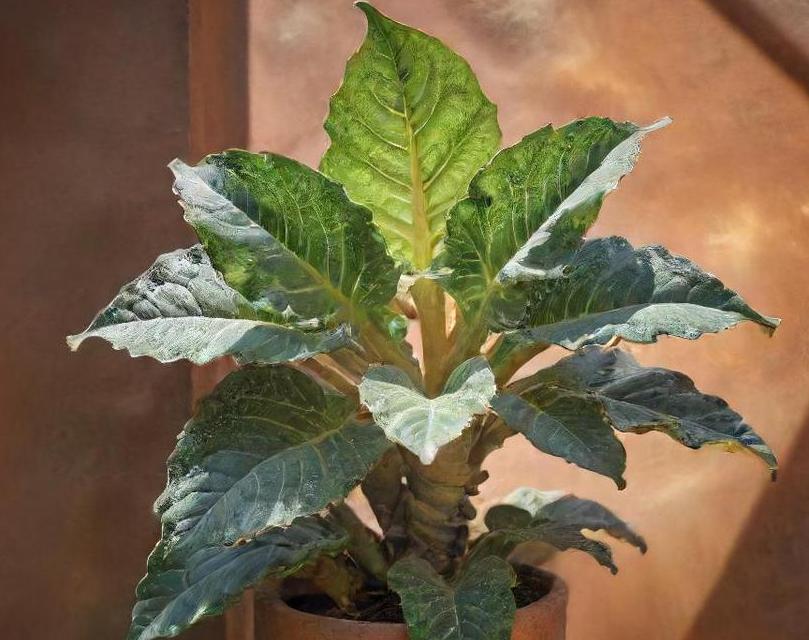
Proper planting techniques are essential for establishing Elephant’s Ear Kalanchoe in indoor environments and ensuring its long-term health and vitality. Whether starting from a nursery-bought specimen or propagating from cuttings, following these steps will help you successfully plant and care for this distinctive succulent.
Potting
Container Selection: Choose a container with sufficient drainage holes to prevent waterlogging, as excessive moisture can lead to root rot. Additionally, select a pot that provides ample room for the plant’s root system to grow, with a diameter slightly larger than the plant’s current root ball.
Potting Mix: Elephant’s Ear Kalanchoe thrives in well-draining soil that mimics its native habitat’s sandy or rocky conditions. Prepare a potting mix consisting of equal parts of standard potting soil and perlite or coarse sand to enhance drainage and aeration. Alternatively, specialized succulent or cactus potting mixes are commercially available and well-suited for Elephant’s Ear Kalanchoe.
Planting Procedure:
-
Preparation: Begin by filling the bottom of the pot with a layer of gravel or small stones to further improve drainage.
-
Soil Placement: Add a layer of the prepared potting mix on top of the gravel, ensuring that it evenly covers the bottom of the pot without compacting.
-
Plant Placement: Carefully remove the Elephant’s Ear Kalanchoe from its nursery pot, taking care not to damage the roots. Gently loosen the root ball if necessary to encourage outward growth.
-
Centering: Place the plant in the center of the pot, ensuring that the top of the root ball sits slightly below the pot’s rim.
-
Backfilling: Fill in the gaps around the root ball with additional potting mix, gently firming it down to provide stability while avoiding excessive compaction.
-
Watering: After planting, water the Elephant’s Ear Kalanchoe thoroughly to settle the soil and encourage root establishment. Allow any excess water to drain freely from the bottom of the pot.
Placement and Lighting: Position the potted Elephant’s Ear Kalanchoe in a location that receives bright, indirect sunlight, such as a south or west-facing window. Avoid placing it in direct sunlight, as this can lead to leaf scorching or sunburn. If adequate natural light is unavailable, supplement with grow lights to ensure optimal growth and foliage coloration.
Temperature and Humidity: Elephant’s Ear Kalanchoe thrives in moderate to warm temperatures ranging from 65°F to 75°F (18°C to 24°C). While it can tolerate slightly lower temperatures, prolonged exposure to cold drafts or freezing temperatures can damage the plant. Additionally, maintain moderate humidity levels to prevent excessive moisture accumulation around the plant, which can increase the risk of fungal diseases.
Elephant's Ear Kalanchoe is a captivating indoor plant that adds a touch of exotic elegance to any home or office space. With its striking foliage, low maintenance requirements, and adaptability to indoor environments, it's no wonder why this succulent species has gained popularity among plant enthusiasts and collectors. By understanding and implementing proper care practices, such as watering appropriately, fertilizing judiciously, and planting correctly, you can ensure the health and longevity of your Elephant's Ear Kalanchoe.
Appearance
The Elephant’s Ear Kalanchoe, scientifically known as Kalanchoe beharensis, is a striking succulent plant that adds a touch of exotic beauty to indoor spaces. Originating from Madagascar, this plant is renowned for its large, fleshy leaves with a velvety texture and unique shape reminiscent of elephant ears, hence its common name.
The Elephant’s Ear Kalanchoe boasts thick, paddle-shaped leaves that can grow up to a foot in length. These leaves are coated in a soft, felt-like layer of tiny hairs, giving them a silvery-green appearance. The edges of the leaves often have a reddish-brown tint, adding to the plant’s visual appeal. Additionally, the stem of the Elephant’s Ear Kalanchoe can grow tall and robust, lending a sculptural quality to its overall appearance.
Care Requirements
Caring for Elephant’s Ear Kalanchoe indoors requires attention to its specific needs. This succulent thrives in well-draining soil and prefers bright, indirect sunlight. Overwatering can lead to root rot, so it’s crucial to allow the soil to dry out between waterings. Furthermore, Elephant’s Ear Kalanchoe is sensitive to cold temperatures and should be protected from drafts.
Pruning Techniques For Elephant’s Ear Kalanchoe
Proper pruning is essential for maintaining the health and appearance of Elephant’s Ear Kalanchoe. Here are some pruning techniques to consider:
Removing Dead Or Damaged Leaves
Inspect the plant regularly for any dead or damaged leaves. These can attract pests and diseases if left unchecked. Using clean, sharp scissors or pruning shears, carefully trim away any unhealthy foliage close to the stem. Be sure to make clean cuts to minimize stress on the plant.
Controlling Growth
Elephant’s Ear Kalanchoe has a tendency to grow tall and leggy over time, especially if it doesn’t receive enough sunlight. To encourage a more compact and bushy growth habit, prune back leggy stems by cutting them just above a leaf node. This will stimulate new growth and help maintain the plant’s shape.
Shaping The Plant
If you desire a specific shape or size for your Elephant’s Ear Kalanchoe, pruning can help achieve this. Use pruning shears to trim the outer edges of the plant to the desired shape, whether it’s rounded, symmetrical, or cascading. Regular shaping will also prevent the plant from becoming overly unruly.
Propagation Methods For Elephant’s Ear Kalanchoe
Propagating Elephant’s Ear Kalanchoe is relatively straightforward and can be done through several methods:
Leaf Cuttings
One of the most common propagation methods for Elephant’s Ear Kalanchoe is through leaf cuttings. To propagate via leaf cuttings, carefully remove a healthy leaf from the parent plant, making sure to include a portion of the stem. Allow the cutting to callus over for a day or two, then place it in well-draining soil. Keep the soil lightly moist and provide indirect sunlight until roots form, typically within a few weeks.
Stem Cuttings
Stem cuttings are another effective way to propagate Elephant’s Ear Kalanchoe. Select a healthy stem and use sharp, clean scissors or pruning shears to cut it just below a leaf node. Remove any lower leaves to expose the node, then plant the cutting in moist soil. Keep the soil consistently moist and provide bright, indirect sunlight to encourage root development.
Division
For mature Elephant’s Ear Kalanchoe plants, division is a viable propagation method. Carefully remove the plant from its pot and gently separate the root ball into smaller sections, ensuring each division has its own roots and stems. Replant the divisions in individual pots with well-draining soil, and water them thoroughly. With proper care, each division will establish itself as a new plant.
Troubleshooting Problems With Planting Elephant’s Ear Kalanchoe Indoors
Despite its hardy nature, Elephant’s Ear Kalanchoe may encounter some issues when grown indoors. Here are some common problems and their solutions:
Overwatering
Overwatering is a common issue with Elephant’s Ear Kalanchoe and can lead to root rot and other problems. To remedy this, allow the soil to dry out between waterings and ensure the plant’s pot has proper drainage. If root rot has already occurred, carefully remove the affected parts of the plant and repot it in fresh soil.
Pests
Mealybugs and spider mites are two common pests that can affect Elephant’s Ear Kalanchoe. To combat these pests, regularly inspect the plant for signs of infestation, such as webbing or white, cottony clusters. If pests are present, gently wipe the leaves with a damp cloth or cotton swab dipped in rubbing alcohol to remove them. In severe cases, insecticidal soap or neem oil can be used to treat the plant.
Sunburn
While Elephant’s Ear Kalanchoe thrives in bright, indirect sunlight, prolonged exposure to direct sunlight can cause sunburn on its leaves. If you notice brown or yellow spots developing on the leaves, move the plant to a shadier location to prevent further damage. Providing filtered sunlight or moving the plant slightly away from the window can help protect it from intense sunlight.
Leggy Growth
If your Elephant’s Ear Kalanchoe is growing tall and leggy, it may be a sign that it’s not receiving enough sunlight. To encourage more compact growth, move the plant to a brighter location with indirect sunlight. Additionally, consider pruning back leggy stems to stimulate new growth and maintain the plant’s shape.
Conclusion
The Elephant’s Ear Kalanchoe is a stunning addition to any indoor plant collection, with its distinctive foliage and easy-care nature. By following proper pruning techniques, mastering propagation methods, and troubleshooting common problems, you can enjoy the beauty of this unique succulent for years to come. With its resilience and striking appearance, the Elephant’s Ear Kalanchoe is sure to captivate plant enthusiasts and novices alike, bringing a touch of Madagascar’s exotic charm into your home.
FAQS
What Is An Elephant’s Ear Kalanchoe?
Elephant’s Ear Kalanchoe, scientifically known as Kalanchoe beharensis, is a striking succulent plant native to Madagascar. It belongs to the Crassulaceae family and is cherished for its large, fuzzy, elephant ear-shaped leaves, which can grow up to a foot long and are covered in soft silver-green hairs.
How Do I Care For An Elephant’s Ear Kalanchoe?
Elephant’s Ear Kalanchoe thrives in bright, indirect sunlight. It prefers well-draining soil, such as a cactus mix, and should be watered moderately, allowing the soil to dry out between waterings. During the growing season, fertilize the plant with a balanced liquid fertilizer diluted to half strength. It’s important to protect the plant from frost, as it is sensitive to cold temperatures.
What Are The Typical Growing Conditions For Elephant’s Ear Kalanchoe?
Elephant’s Ear Kalanchoe prefers warm temperatures ranging between 65°F to 80°F (18°C to 27°C). It grows best in a humid environment, but it can adapt to lower humidity levels. Proper ventilation is essential to prevent fungal diseases. The plant can be grown indoors as a houseplant or outdoors in temperate climates, provided it’s protected from frost and extreme heat.
How Often Should I Water Elephant’s Ear Kalanchoe?
Water Elephant’s Ear Kalanchoe thoroughly, allowing excess water to drain away. Water when the top inch of soil feels dry, typically every 1-2 weeks during the growing season. Reduce watering during the winter months when the plant is dormant. Overwatering can lead to root rot, so it’s crucial to avoid letting the plant sit in waterlogged soil.
Does Elephant’s Ear Kalanchoe Require Pruning?
While Elephant’s Ear Kalanchoe doesn’t require extensive pruning, you can trim away any dead or yellowing leaves to maintain its appearance. Additionally, you can pinch back leggy growth to encourage a bushier habit. Use clean, sharp scissors or pruning shears to avoid damaging the plant.
Is Elephant’s Ear Kalanchoe Toxic To Pets?
Yes, Elephant’s Ear Kalanchoe is toxic to cats, dogs, and other pets if ingested. It contains bufadienolides, which can cause gastrointestinal upset, vomiting, and diarrhea in animals. Therefore, it’s essential to keep the plant out of reach of pets and to seek veterinary assistance immediately if ingestion is suspected.
How Can I Propagate Elephant’s Ear Kalanchoe?
Elephant’s Ear Kalanchoe can be propagated easily through stem or leaf cuttings. Simply take a healthy stem cutting or leaf, allow it to callus over for a day or two, then plant it in well-draining soil. Keep the soil lightly moist until roots develop, which usually takes a few weeks. Propagation is most successful during the plant’s active growing season in spring or summer.
